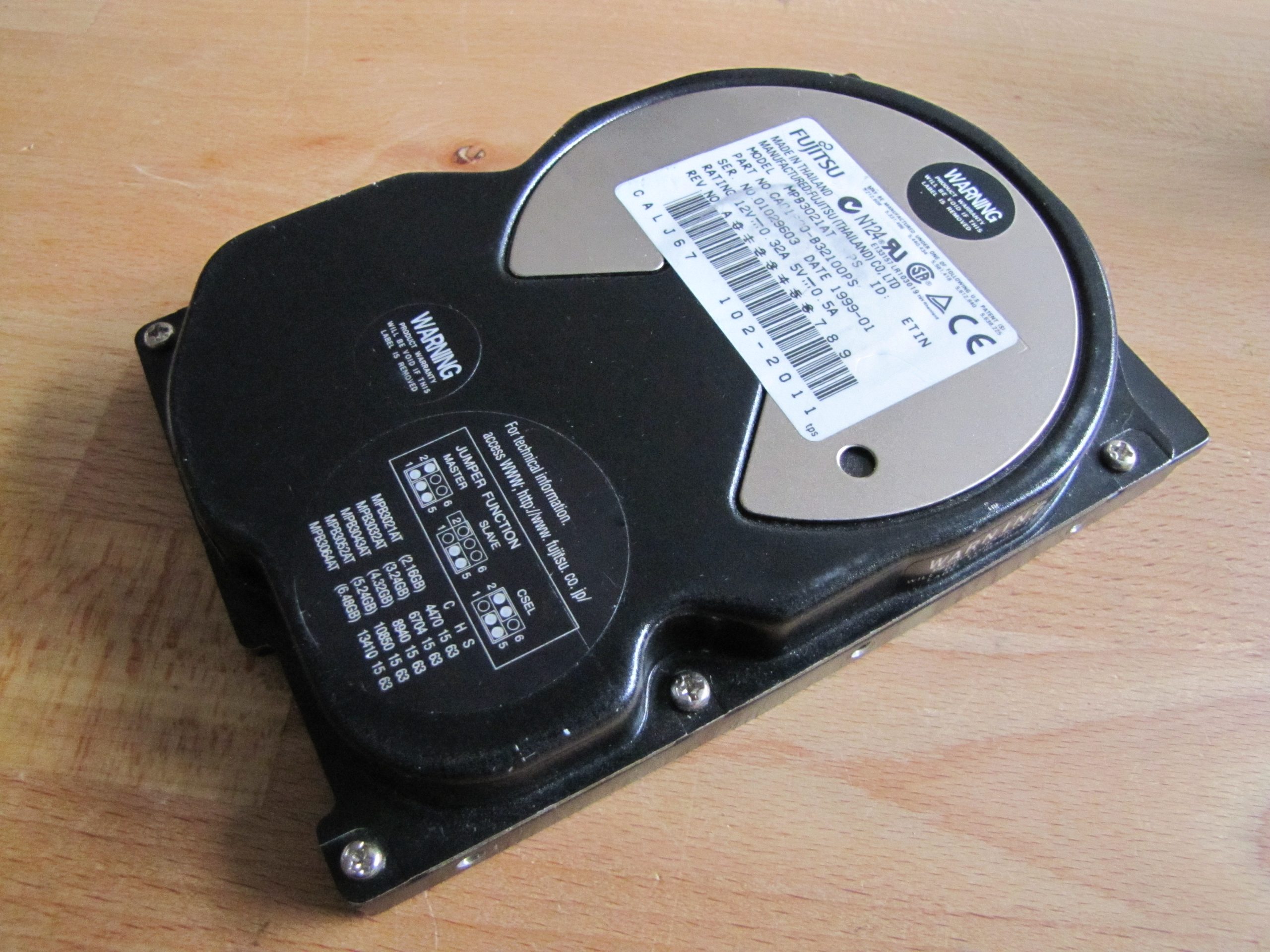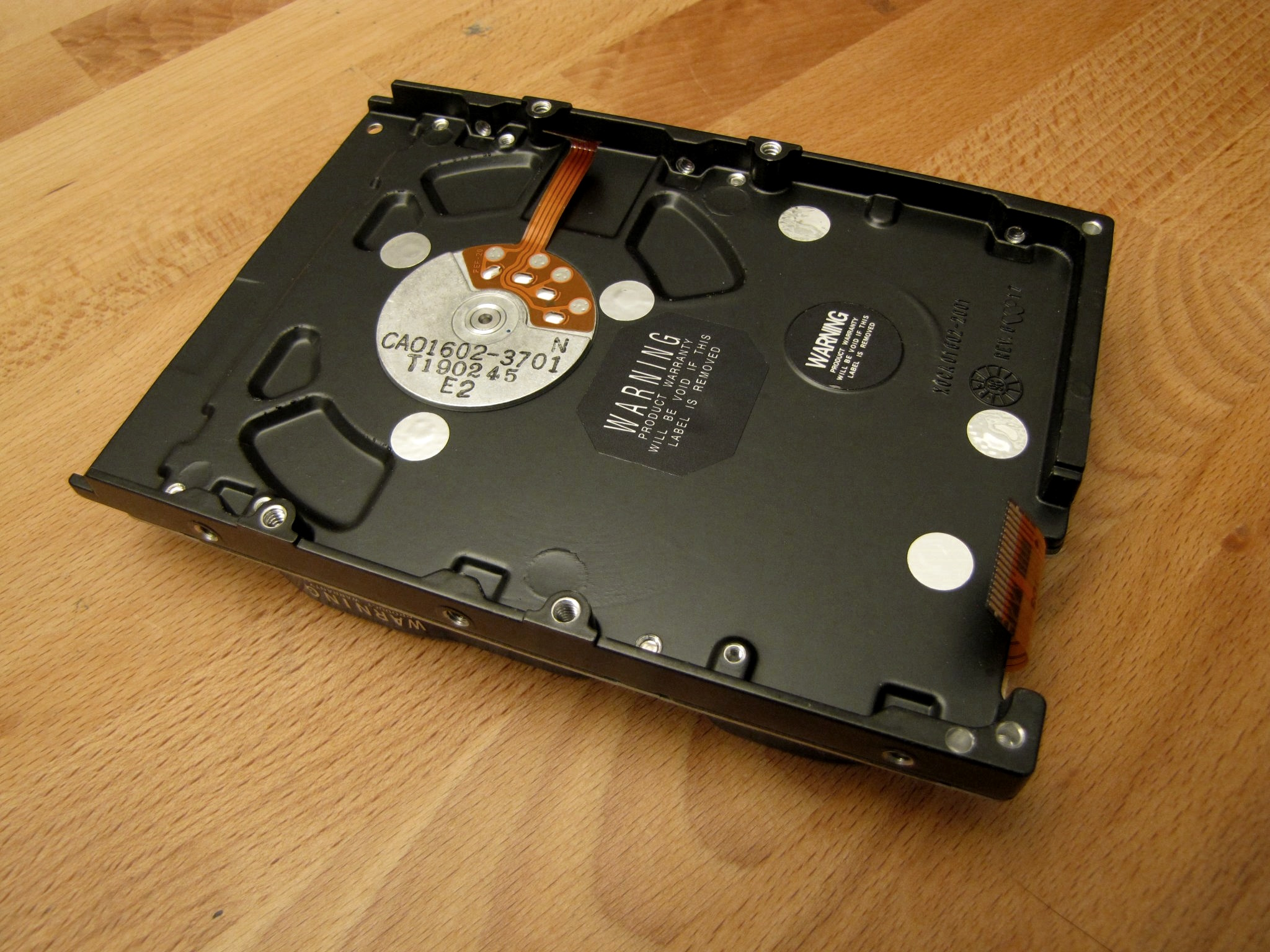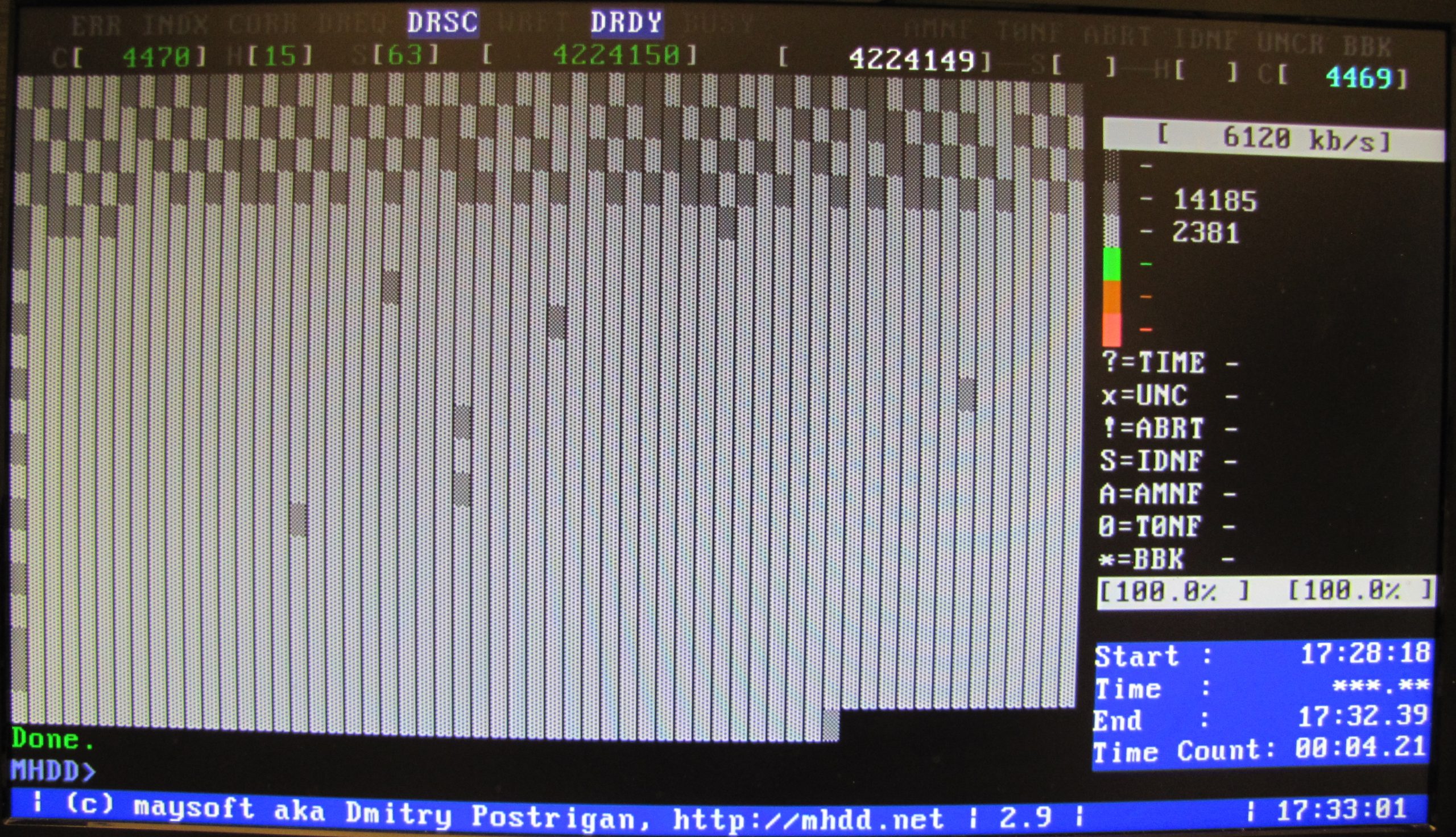With the release of the MPA3x’s in early-1997, the MPB3x series would increase platter densities from 1.75GB (ex. MPA3017AT), to the 2.16GB densities shown on this unit, being available from Q3 1997.
Their design efforts in the 90’s were simple, when putting it lightly. With a no-frills mentality, Fujitsu would keep the cast top mount design for the entire decade for consumer level drives. By the end of the 90’s, Fujitsu would lose in the density race, pushing their market segment to a budget-friendly environment. Fortunately, this one works perfectly, so we can see how it does close to 25 years later.

Drive Attributes ------------------------------------- Fujitsu MPB3021AT ------------------------------------- Capacity 2160MB Mfc Date 1999-01 Format 3.5" Interface PATA Platters 1 Heads 2 Cache 256KB RPM 5400 Protocol Ultra-ATA/33 Origin Thailand (FTC) Codename Picobird-11 -------------------------------------
The MPB3021AT is the lowest capacity member of the MPB3x family, being available in 5 different capacities up to 6.4GB with 3 platters and 6 heads. A depressing 2.1GB in capacity for early 1999 firmly places this drive in a low-end environment for the period, but one would assume its simplicity may allow for a more reliable long-term future.
These designs were limited to 2160MB platters, 1080MB per surface. Having been released in August of 1997, perhaps this is to be expected.

This one is from early 99′. While the drive lives on, the label hasn’t handled life as elegantly. These models were produced in both the Philippines (FCPP) and Thailand (FTC) with early samples appearing from Japan too (a region where Fujitsu also manufactured both media & heads) [1]. This particular specimen is from Thailand, using the logo print as opposed to plain text as is the norm with drives from this region for Fujitsu.
Interestingly, whilst drives from Fujitsu more commonly appear from the Philippines, their factory in Thailand has a much older history. Fujitsu (Thailand) Co., Ltd. (FTC) would open in 1988, with hard drive production beginning in 1991. Unfortunately for the component juggernaut, success wasn’t experienced from the beginning, leading to the factory ending production shortly after. From 1994, much later than many other drive manufacturers, Fujitsu would invest heavily into the location once more, achieving greater success in the latter half of the 1990’s. [1]
In 2002, Western Digital would purchase one of Fujitsu’s factories in Thailand, a 155k square-foot plant specialised in 3.5″ drive manufacturing. [1][2] It’s unknown if the plant that produced this drive would be the one later found in the hands of Western Digital, but it is certainly possible. As far as is known, the factory is still in operation to this day.

The rear is nothing special, looking like a standard Fujitsu with their L-shaped PCB designs.

Fujitsu preferred using their own in-house microcontroller designs, as is present with their MB90004 MCU. 1Mb of Atmel flash memory is present (AT49F1025), alongside 256KB of cache which was supplied by Mosel Vitelic. The spindle motor driver was provided by Hitachi. Reasonably simple stuff.
Once again, Fujitsu neglected to state where the PCB was assembled. It makes one question why Fujitsu even bothered to mark it as such, but it’s certainly something they remained consistent at.

Removing the PCB and insulation material (being a fairly unique plastic film, feeling more like a shopping/carrier bag than electronics isolation), the end result is reasonably bare.
A standard three-phase spindle motor sits in the middle. No branding to be seen, it’s a mystery.

Being from 99′, this drive does support some rudimentary SMART reporting. With a single spin retry being the only sign of issues, this drive is in good health.


Fujitsu’s late 3.5″ efforts aren’t flashy, nor feature abundant, but they are an important part of what made the 90’s an era full of interesting drive manufacturers. They can at least be thanked for that.
Fujitsu MPB3x Maintenance Manual (pdf)
If you missed the video I made on this drive, you can find it here:
References:
[1] GRIPS – National Graduate Institute for Policy Students, Competitive Strategy of Global Firms and Industrial Clusters 1, Case Study on the Hard Disk Drive (HDD) Industry, Tomofumi Amano, Acquired from: https://www.grips.ac.jp/ Downloadable mirror: Competitive Strategy of Global Firms and Industrial Clusters 1 Case Study on the Hard Disk Drive (HDD) Industry (.pdf)
[2] Orange County Business Journal (2002), Andrew Simons, Western Digital Sees Rally Succumb to New Worries , Acquired from: https://escholarship.org/content/qt0sh085cn/qt0sh085cn_noSplash_3a182fa772ebae1df4cdd70be948d4ad.pdf, Downloadable mirror: Western Digital Sees Rally Succumb to New Worries – Orange County Business Journal (.html)